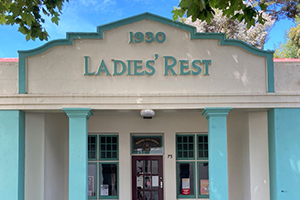
Arguments over public toilets are a recurring flashpoint in the fight for trans rights.
BACKSTORY
Photo: Ladies’ Rest in Whanganui.
Unrest Room
Arguments over public toilets are a recurring flashpoint in the fight for trans rights. As it turns out, these facilities have been places of contention for many marginalised groups throughout history.

